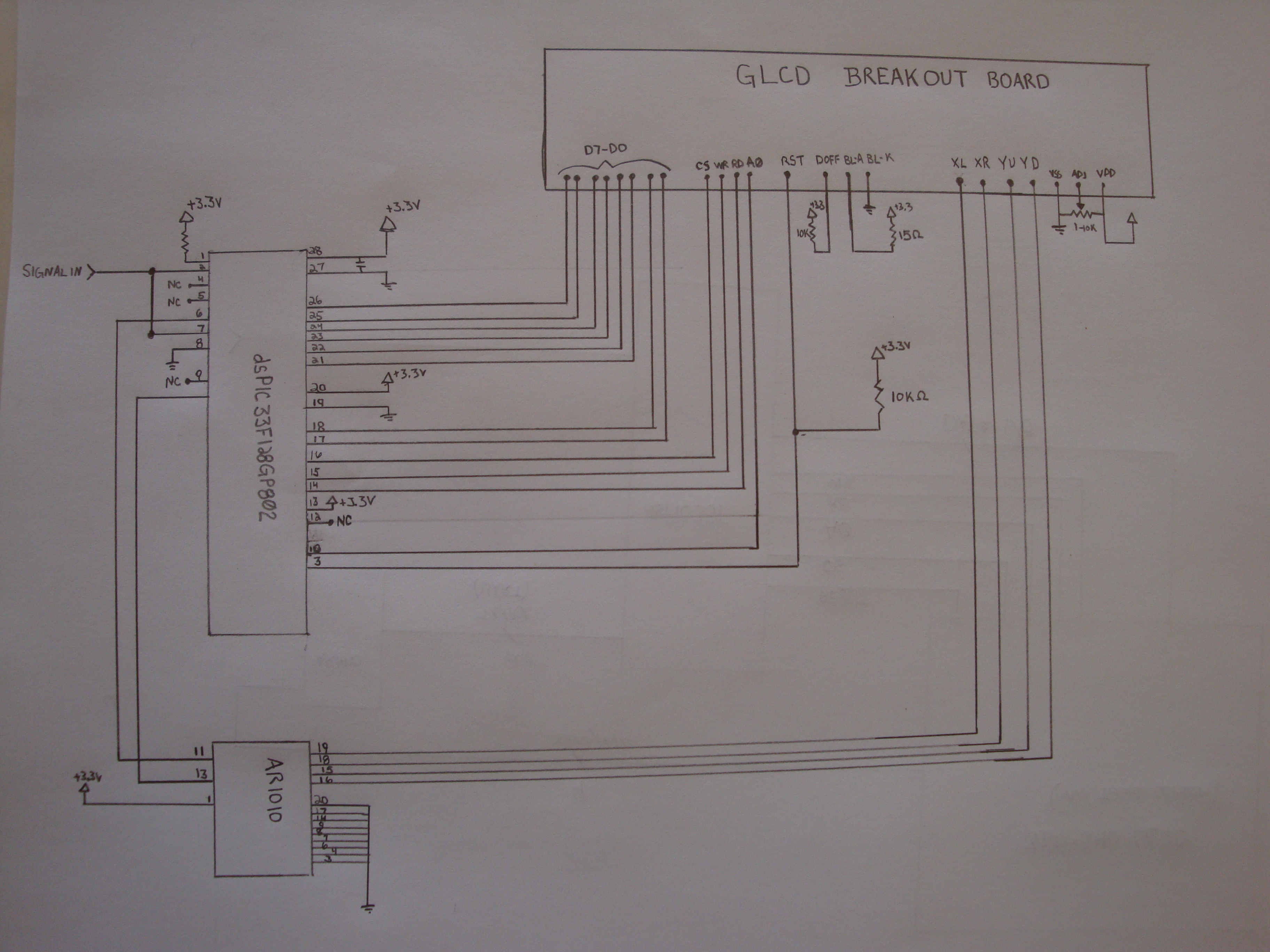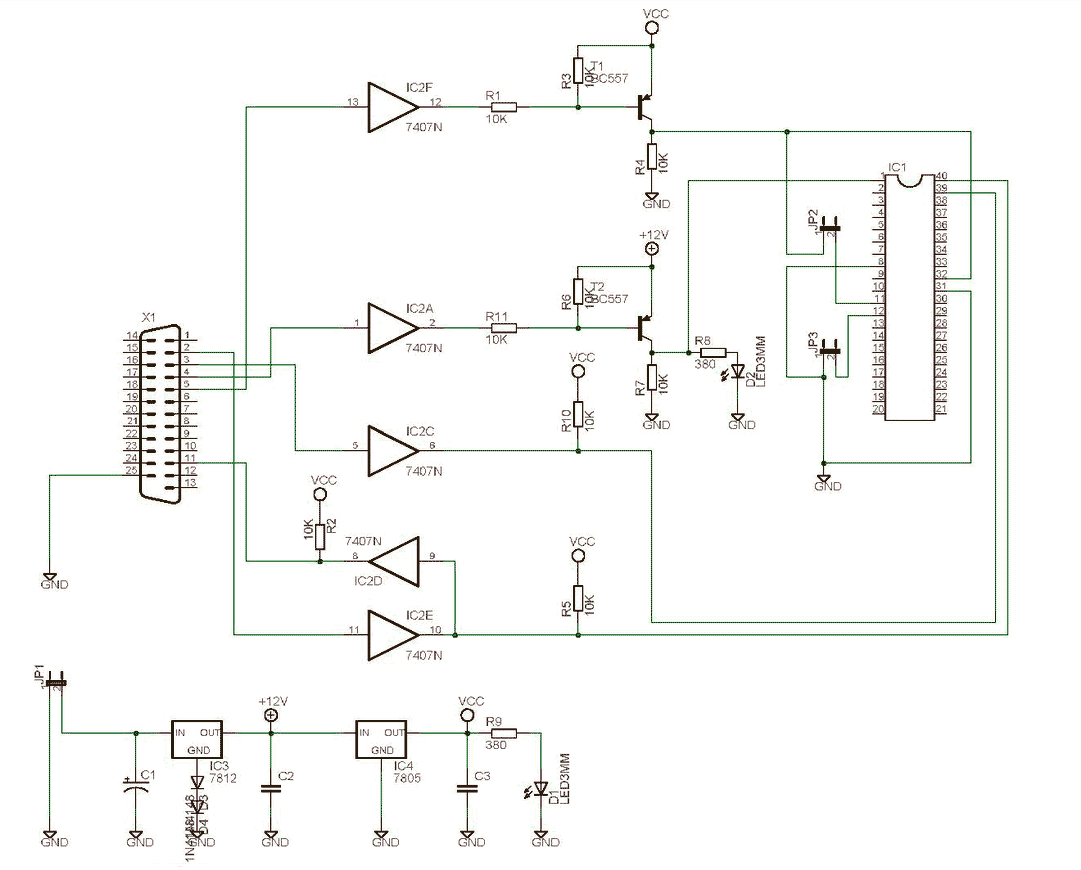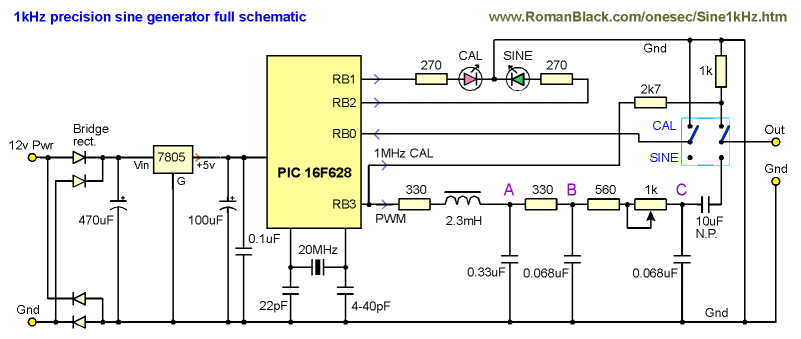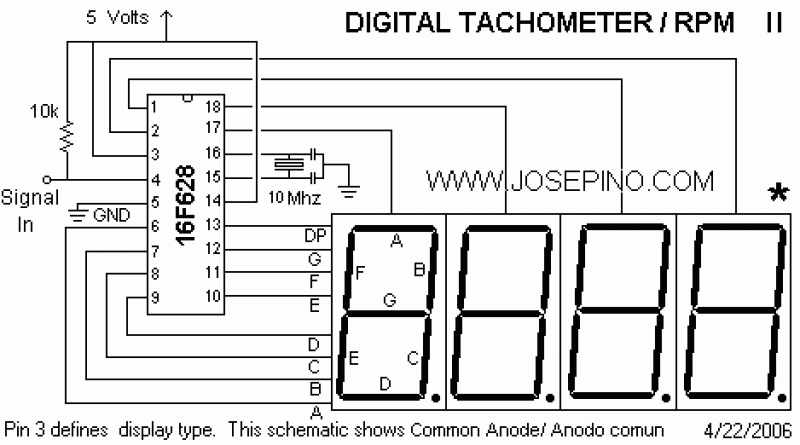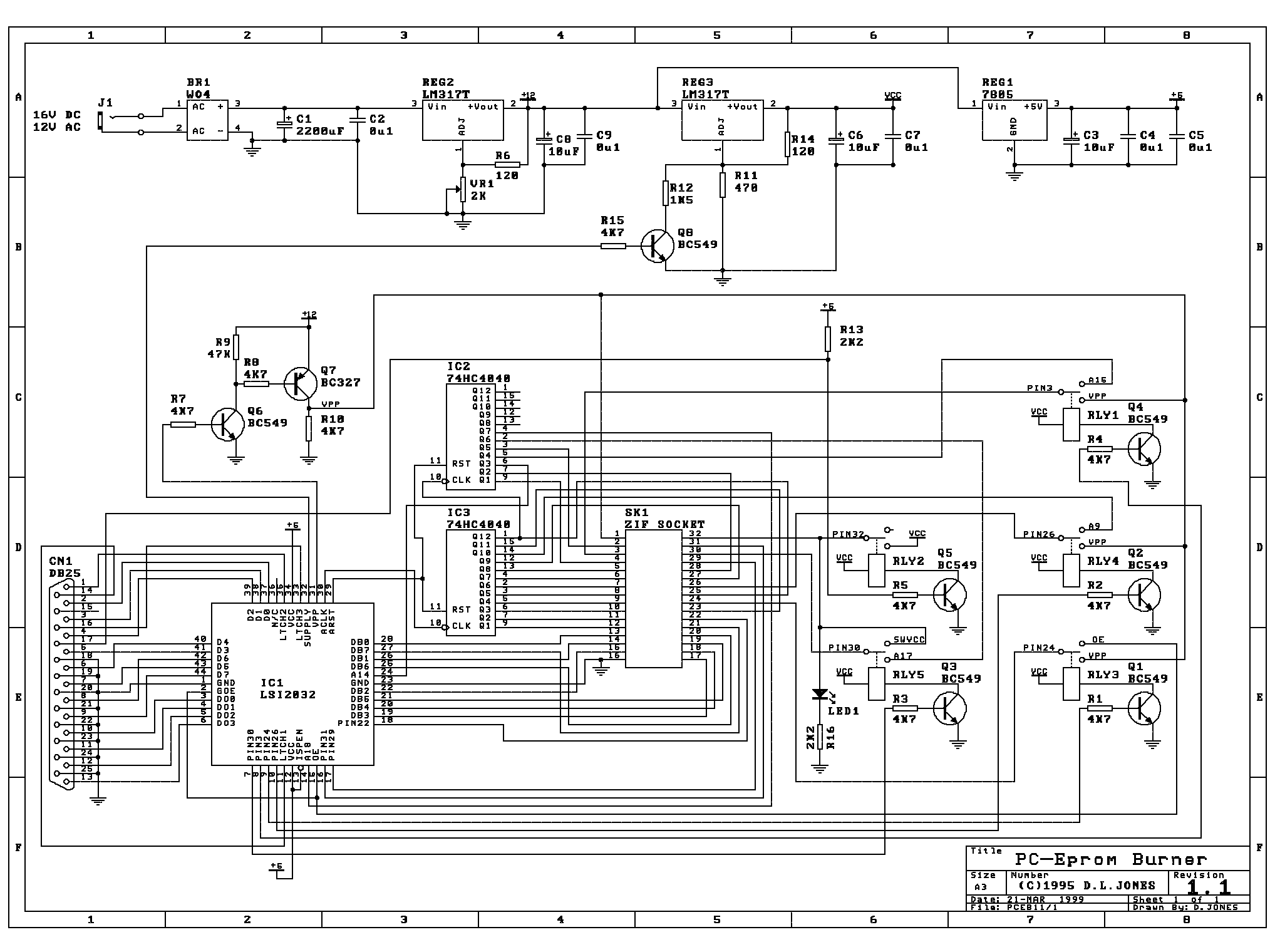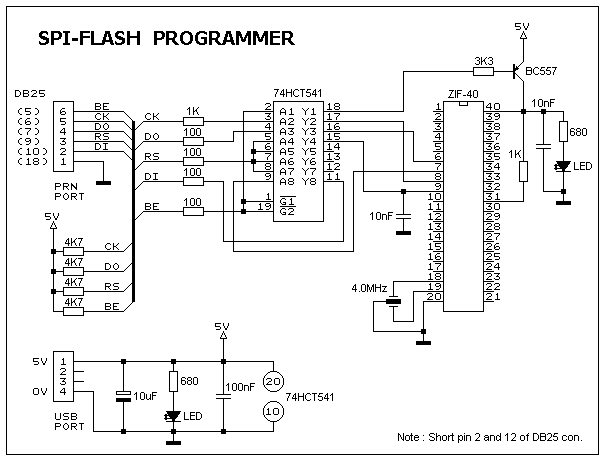
USB-Powered PIC Programmer
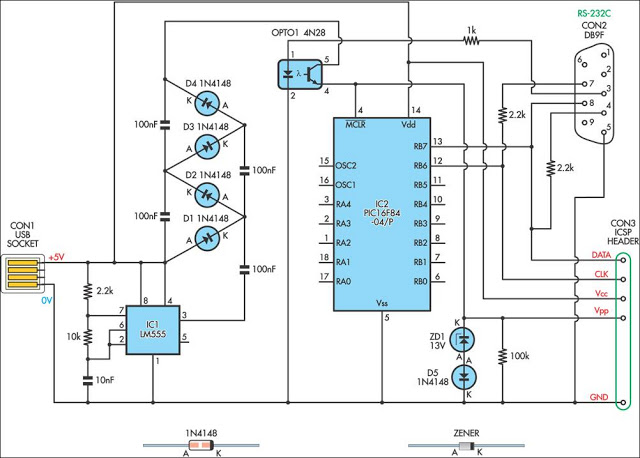
This simple circuit can be used to program the PIC16F84 and similar flash memory type parts. It uses a cheap 555 timer IC to generate the programming voltage.
The circuit utilizes a 555 timer IC configured in astable mode to produce a square wave output that serves as the programming voltage for the PIC16F84 microcontroller. The frequency and duty cycle of the square wave can be adjusted by varying the resistors and capacitor connected to the timer. This programming voltage is essential for writing data to the flash memory of the microcontroller.
The circuit typically includes a power supply section that provides the necessary voltage levels for both the 555 timer and the PIC16F84. A resistor-capacitor (RC) network is used to set the timing characteristics of the 555 timer, which directly influences the programming pulse width and frequency. The output from the 555 timer is then routed to the programming pin of the PIC16F84, ensuring that the microcontroller receives the correct voltage levels during programming.
Additional components, such as diodes and transistors, may be included in the circuit to protect against voltage spikes and to control the flow of current to the microcontroller. Proper layout and grounding techniques should be employed to minimize noise and interference, which can adversely affect the programming process.
This circuit design is particularly useful for hobbyists and engineers working with PIC microcontrollers, as it provides a cost-effective and straightforward solution for programming flash memory devices. Careful attention to component selection and circuit configuration will enhance the reliability and performance of the programming process.This simple circuit can be used to program the PIC16F84 and similar “flash memory†type parts. It uses a cheap 555 timer IC to generate the programming vo.. 🔗 External reference
The circuit utilizes a 555 timer IC configured in astable mode to produce a square wave output that serves as the programming voltage for the PIC16F84 microcontroller. The frequency and duty cycle of the square wave can be adjusted by varying the resistors and capacitor connected to the timer. This programming voltage is essential for writing data to the flash memory of the microcontroller.
The circuit typically includes a power supply section that provides the necessary voltage levels for both the 555 timer and the PIC16F84. A resistor-capacitor (RC) network is used to set the timing characteristics of the 555 timer, which directly influences the programming pulse width and frequency. The output from the 555 timer is then routed to the programming pin of the PIC16F84, ensuring that the microcontroller receives the correct voltage levels during programming.
Additional components, such as diodes and transistors, may be included in the circuit to protect against voltage spikes and to control the flow of current to the microcontroller. Proper layout and grounding techniques should be employed to minimize noise and interference, which can adversely affect the programming process.
This circuit design is particularly useful for hobbyists and engineers working with PIC microcontrollers, as it provides a cost-effective and straightforward solution for programming flash memory devices. Careful attention to component selection and circuit configuration will enhance the reliability and performance of the programming process.This simple circuit can be used to program the PIC16F84 and similar “flash memory†type parts. It uses a cheap 555 timer IC to generate the programming vo.. 🔗 External reference
